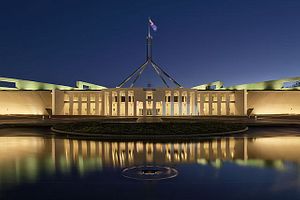The idea of Australia becoming a republic has resurfaced after the leader of the opposition Labor Party has stated that he will initiate a referendum process if Labor wins the next Federal election (to be held before May 2019).
The process that Labor hopes to implement will involve two stages, first a question asking “Do you support an Australian republic with an Australian head of state?” and if an affirmative response is obtained from the public, a consultation procedure will be launched to create a model for a republic, and a second referendum will be held to approve it.
During the 1990s the Australian Republican Movement was created to remove the British monarch as Australia’s symbolic head of state (Queen Elizabeth holds no formal powers). The political pressure created by this group led to the first referendum on the issue in 1999, with the proposal being voted against 54.87 percent to 45.13 percent (the question would have needed a majority of states to vote yes, as well as people). At the time a conflict emerged between those who supported the idea of Australia becoming a republic, but disagreed on the model that should be adopted, hindering the success of the referendum. Labor hopes a two-step process will nullify this conflict.
The 1999 referendum put forward the minimal change model, advocating for a president who would be appointed by the Parliament and would simply replace the current practical and ceremonial functions of the Governor-General and the symbolic function of the monarchy. This was the model India chose when it transitioned from the independent dominion status it achieved in 1947 to a republic in 1950. This model would have required no change to Australia’s current Westminster-style parliamentary democracy, and at the time was deemed the model most likely to pass.
A directly elected president would be incompatible with Australia’s current governing structures, as within the current parliamentary system it would set up a power-struggle between the prime minister and the president over who has the public mandate. In particular this would be the case if the president was to represent a political party as the prime minister does (and which would be a likely development with direct elections), and different parties held each office. This model would require a restructuring of how the country governs itself, shifting to a model where the president has at least some executive powers. This would be a change far too drastic for the public to approve of, and remains unlikely to pass.
Although there is undoubtedly a sincere desire for Australia to become a republic within the Labor Party, the timing of this policy announcement is designed to sow further division in the already fracturing governing Liberal Party. While some of the most fervent supporters of the British monarchy make up many of the Liberal Party’s members of parliament and its conservative voter base, their current party leader, Prime Minister Malcolm Turnbull, was the chairman, and public face, of the Australian Republican Movement during their “Yes” campaign at 1999 referendum.
By placing the idea of an Australian republic firmly back into the public debate, Labor hopes that Turnbull will have no choice but to reaffirm his support for a republic, and the splintering of the both the Liberal Party, and conservative politics in general, will intensify. Although Turnbull has recently stated that he does not believe Australians will vote for a republic while Queen Elizabeth is still the monarch, it would be a blow to his already perceived lack of authenticity were he to not fully support the issue that originally defined him to the Australian public.
It is more than likely that Labor will win the next Australian election (more by default than inspiration), therefore initiating the referendum process. Does a referendum on the Australian republic have a chance of success this time? Current commentary advocating a republic has become entangled in nationalist platitudes rather than focusing on the anachronistic nature of the concept of a monarchy. This tactic hopes that an increase in national fervor can trump the cult of celebrity to change Australia’s head of state. It may very well succeed, especially following on from the continued weeding out of dual citizens in the Australian parliament, but it lacks grace, and fuels an insular sentiment that is increasingly destabilizing the world.
Yet the dramatic social and economic changes of the past few decades have fostered a noticeable resurgence in nostalgia alongside, and as part of, this nationalism. As well as a more pressing desire for security in its various forms. These sentiments may very well work against the push for an Australian republic, as overarching public inclination to prevent further structural changes are funnelled into the “No” campaign.
Even if a consensus on the proposal model of a republic is achieved, the current political and emotional terrain may be more difficult for the republican movement to negotiate than in 1999.

































